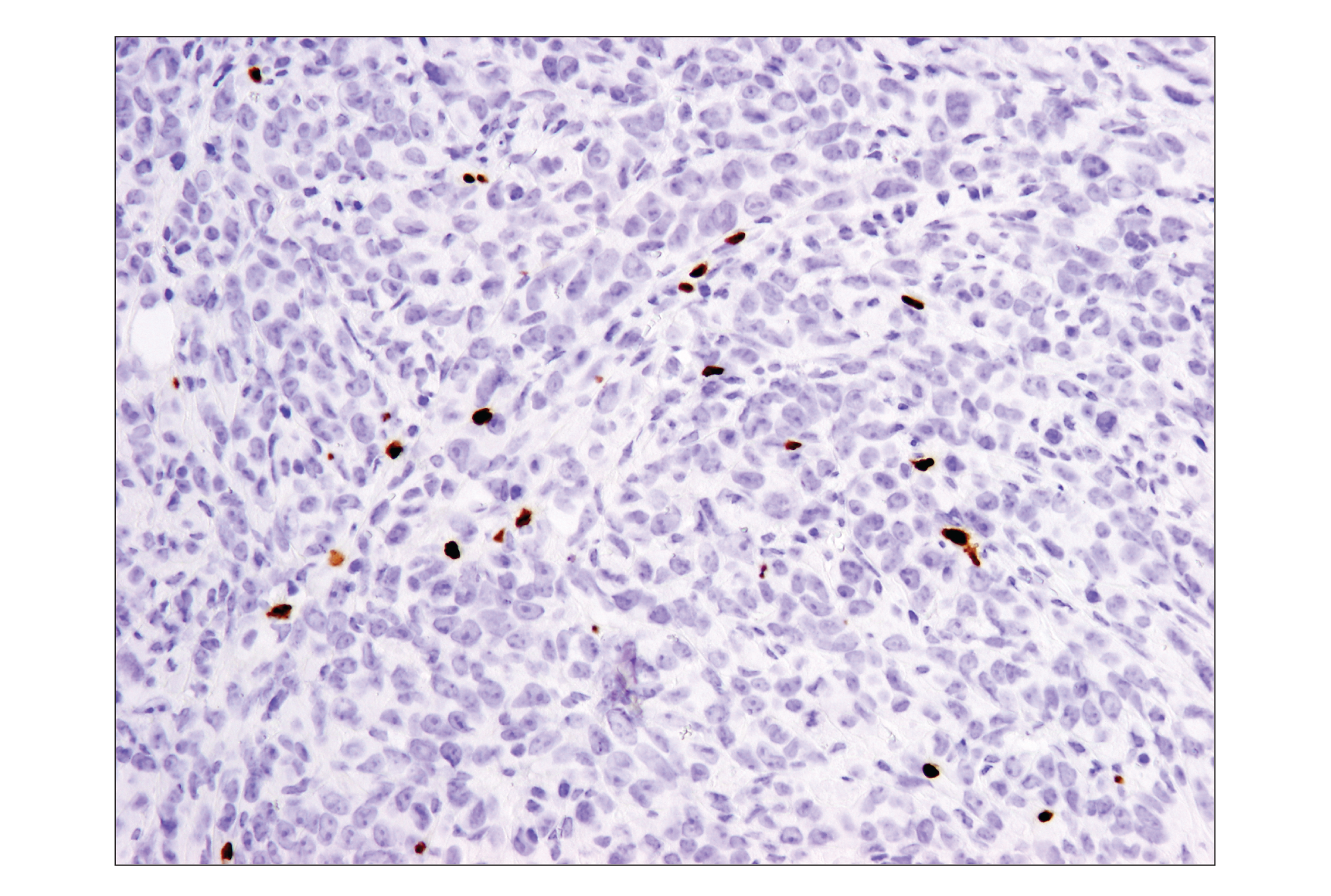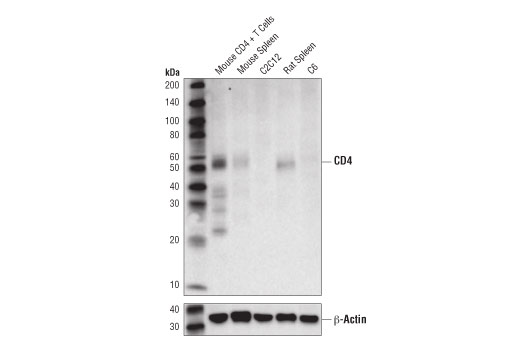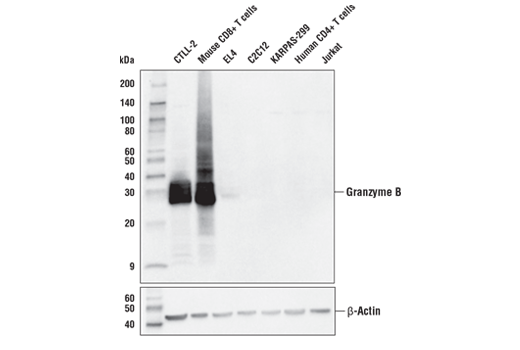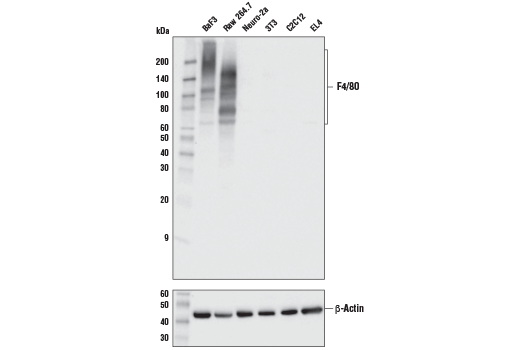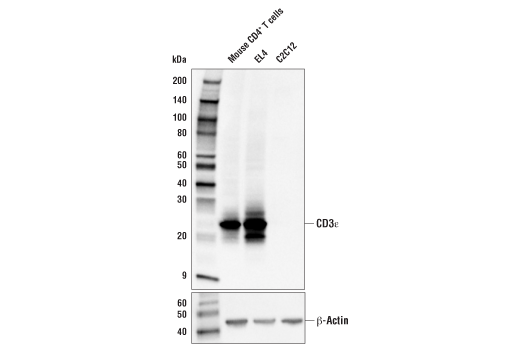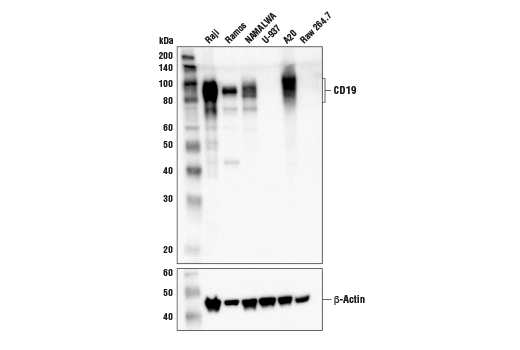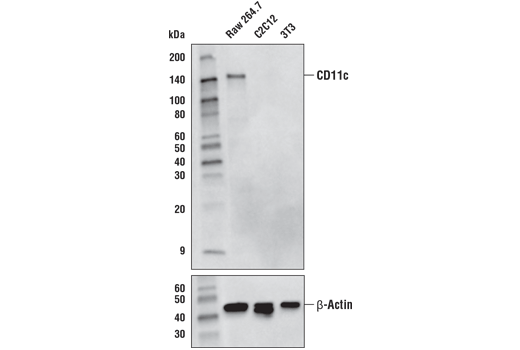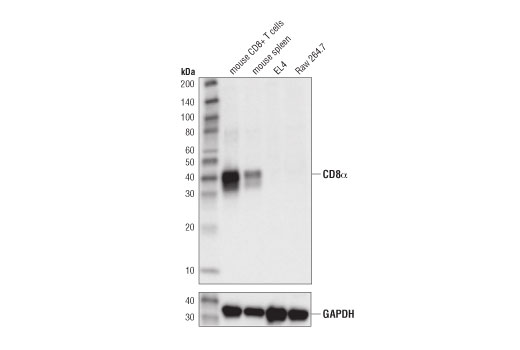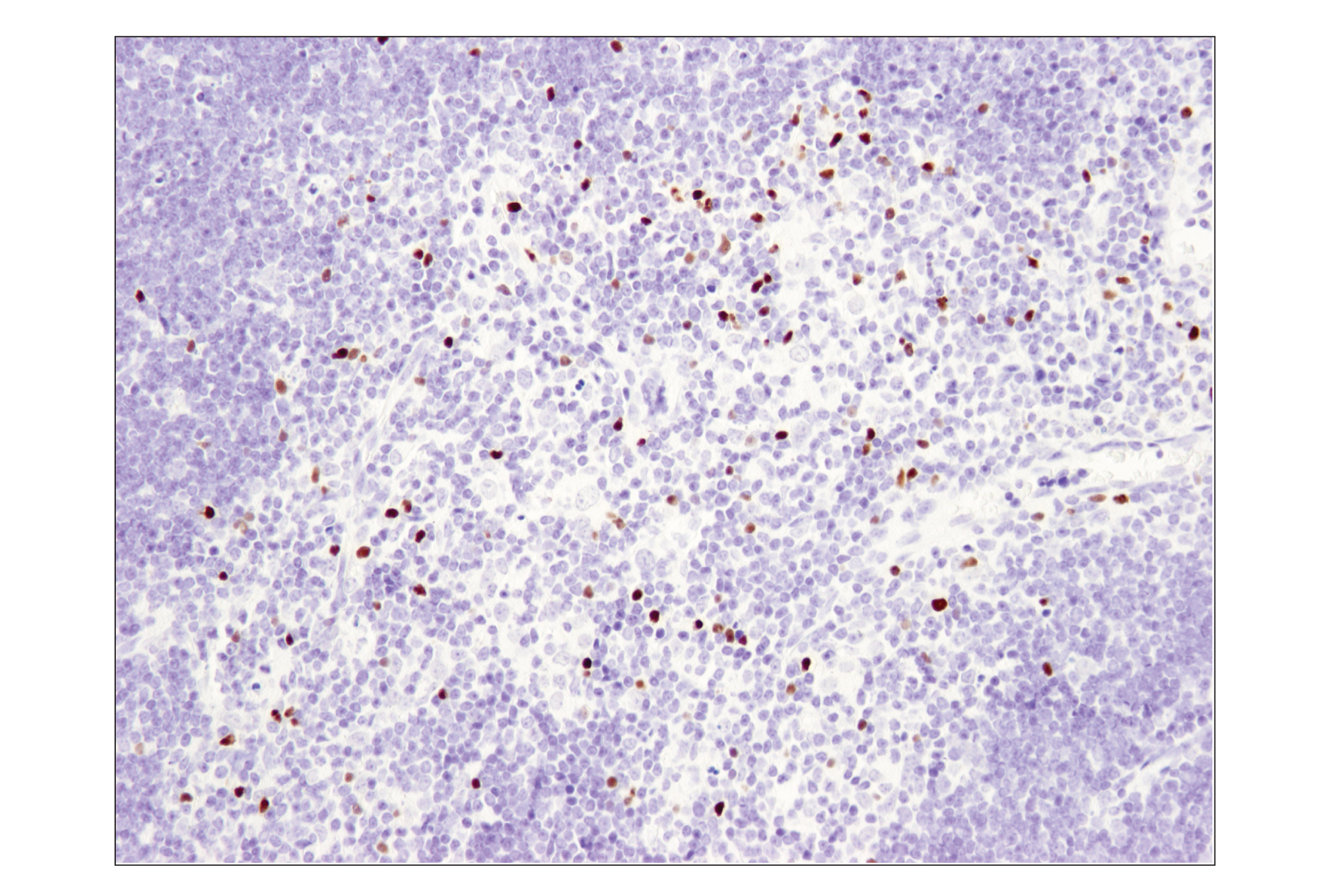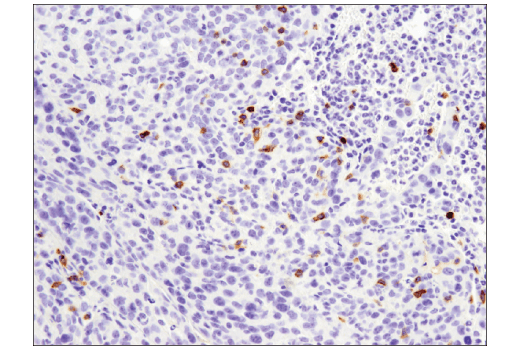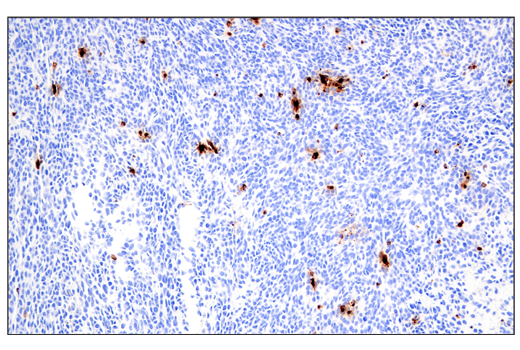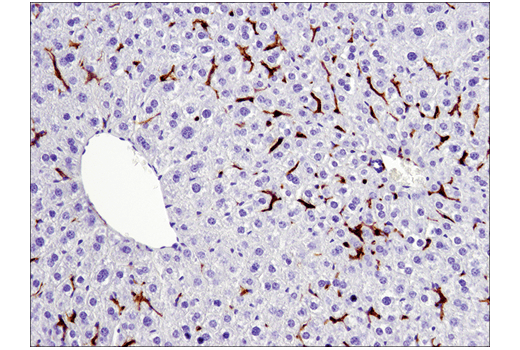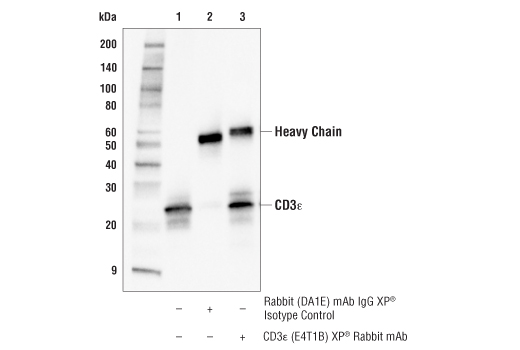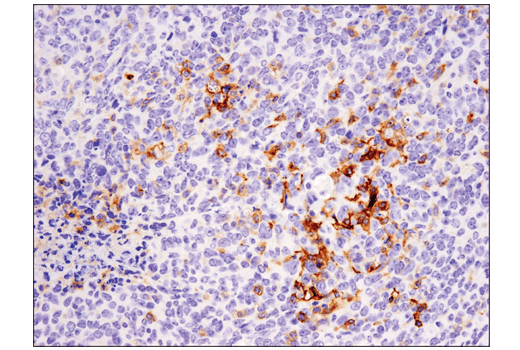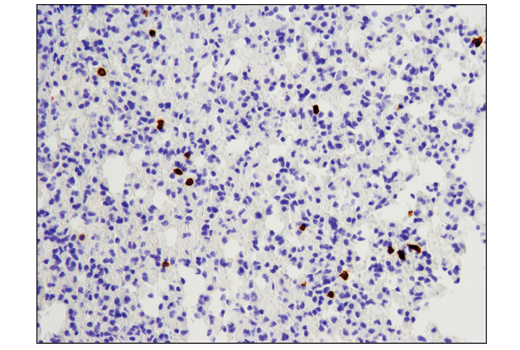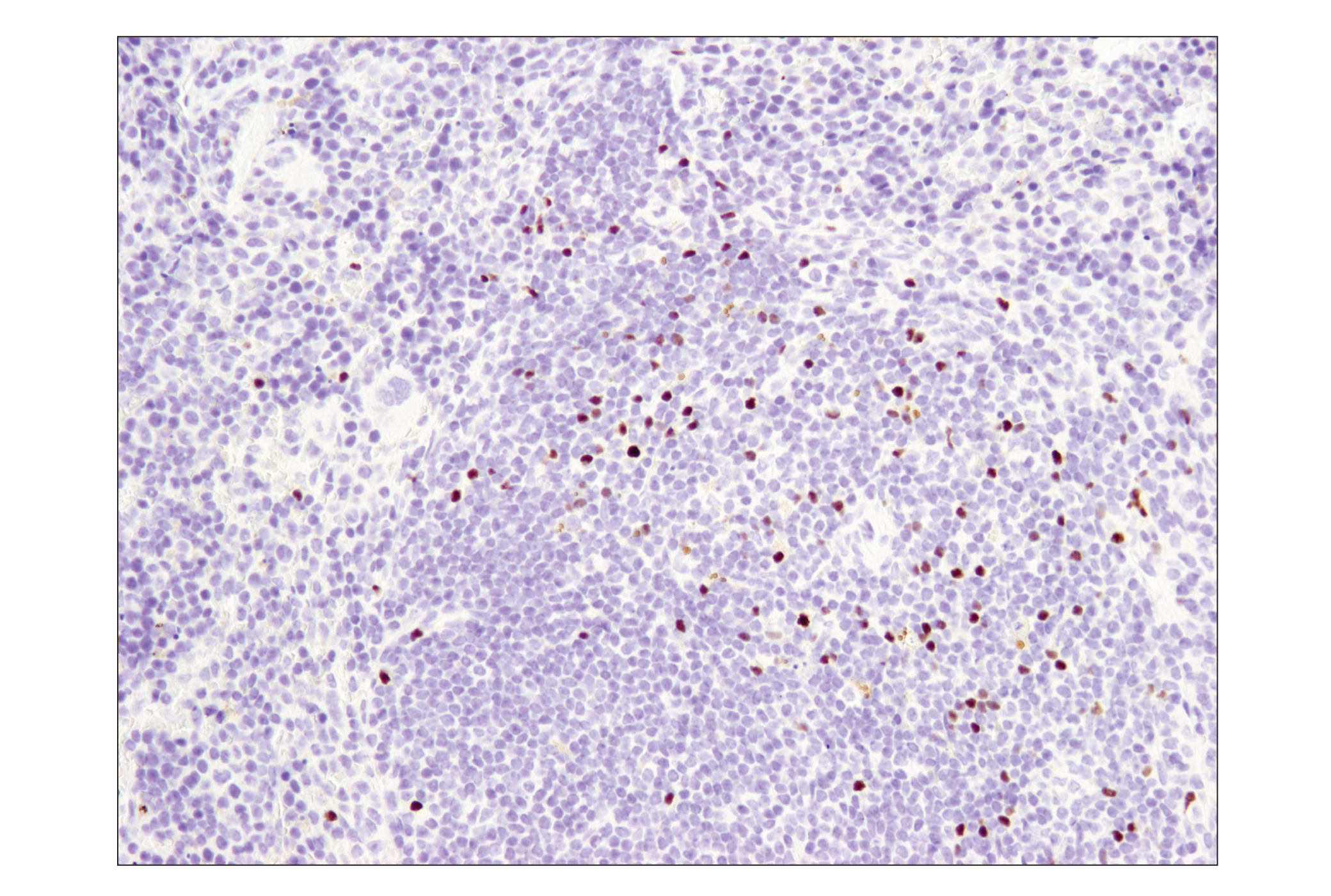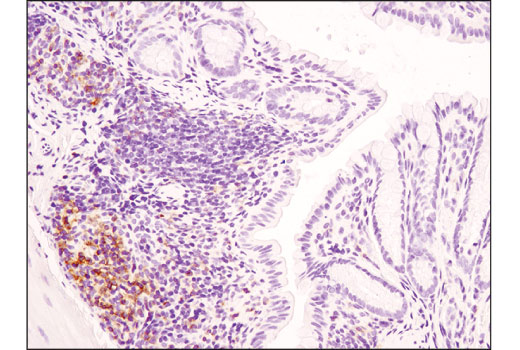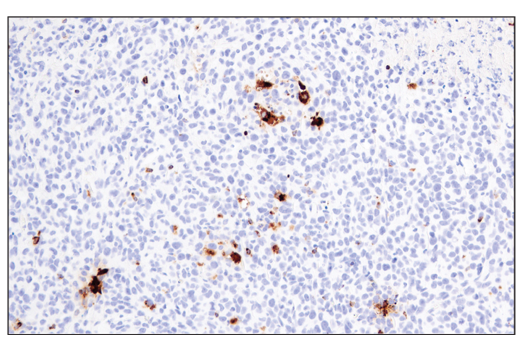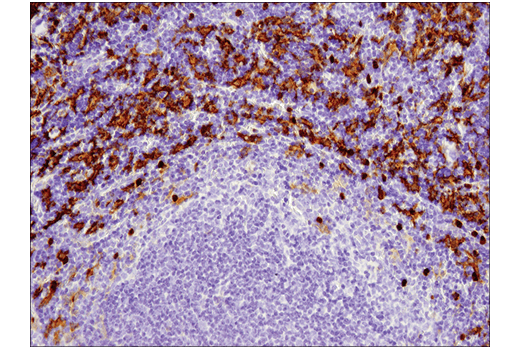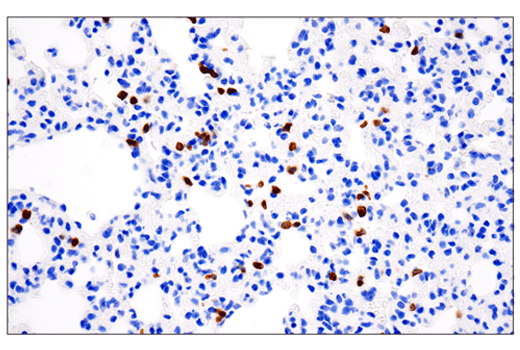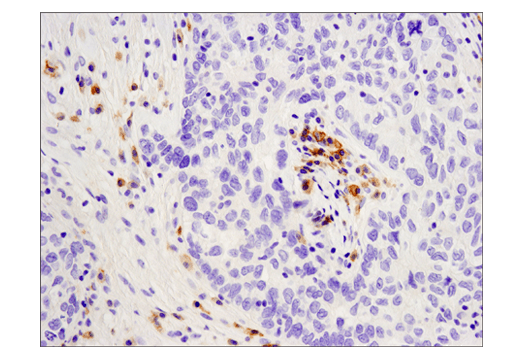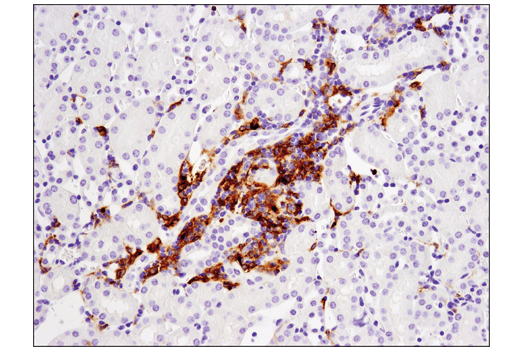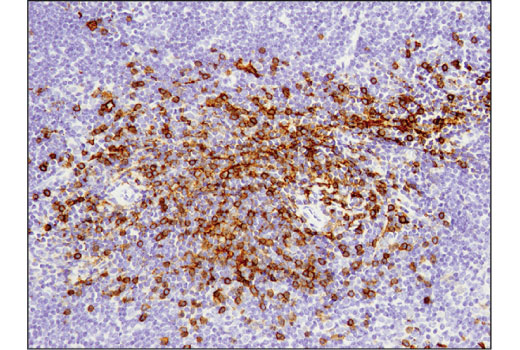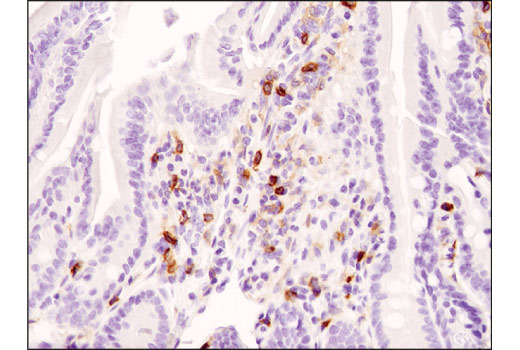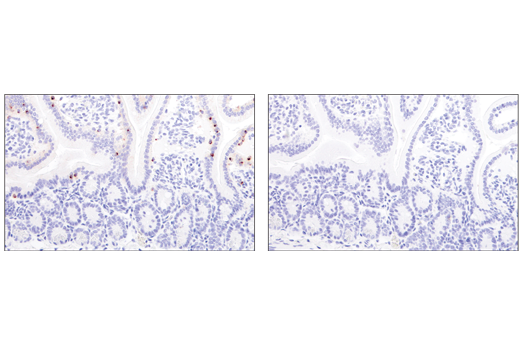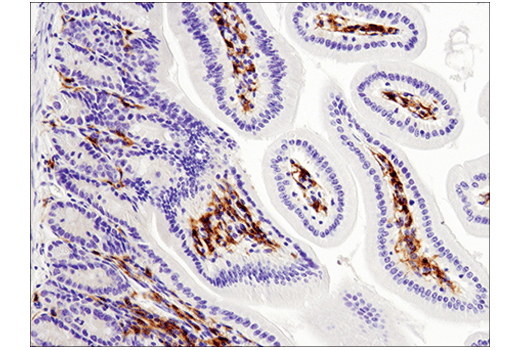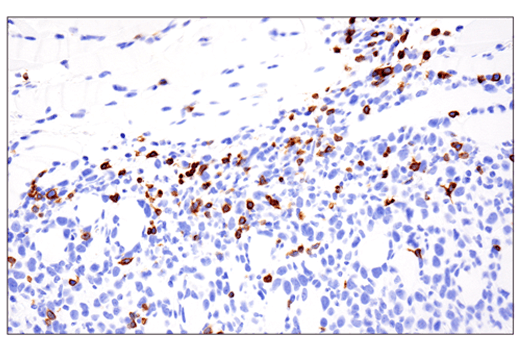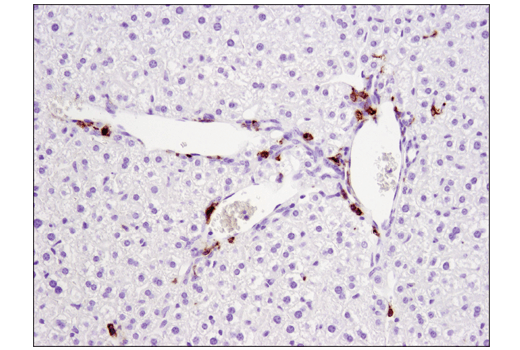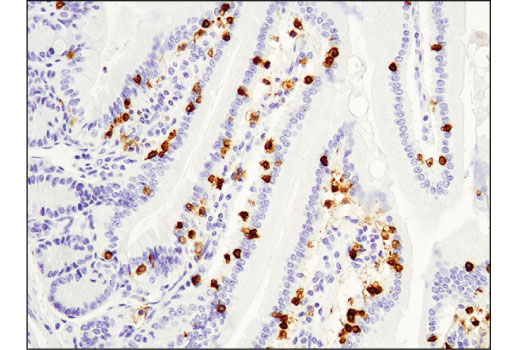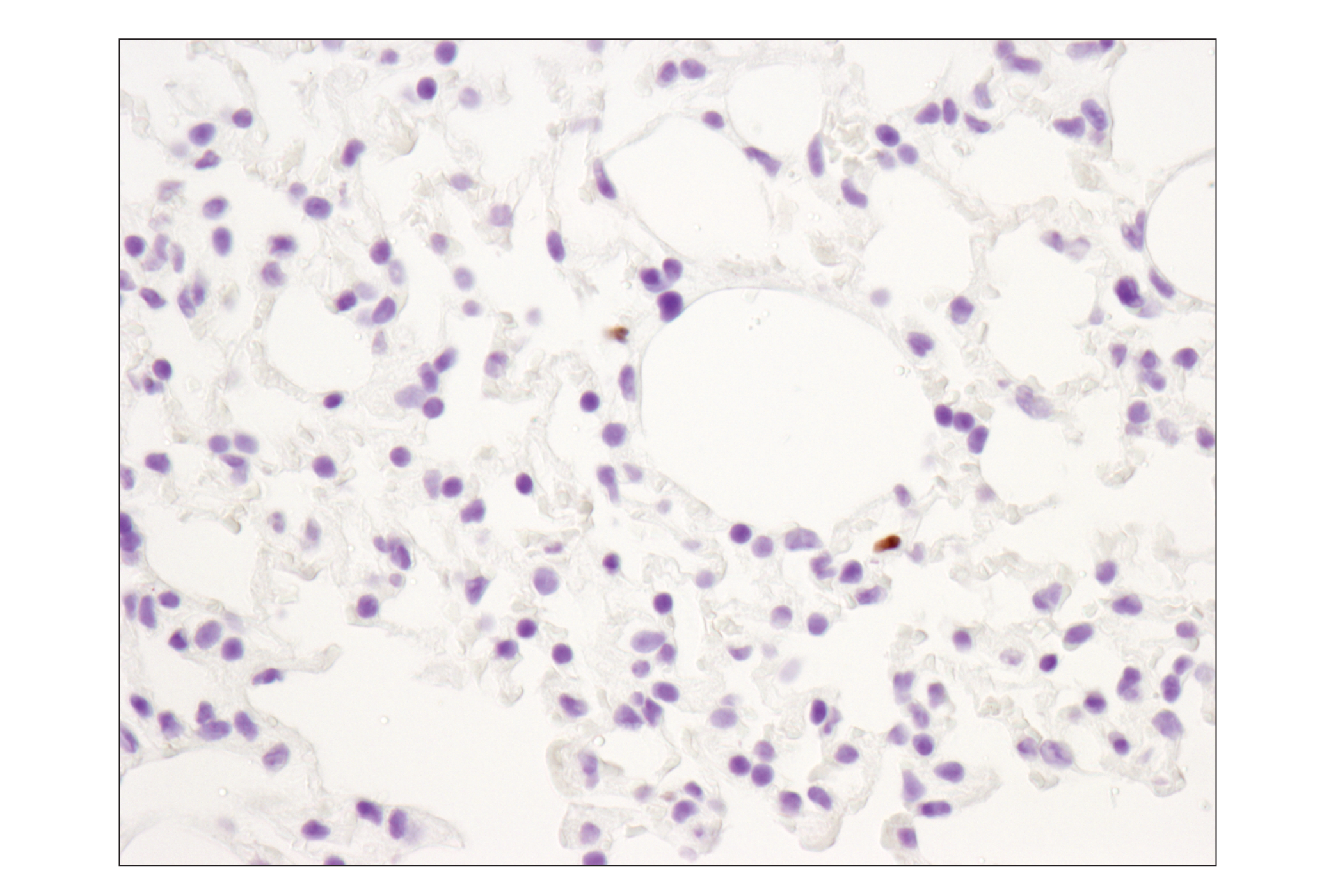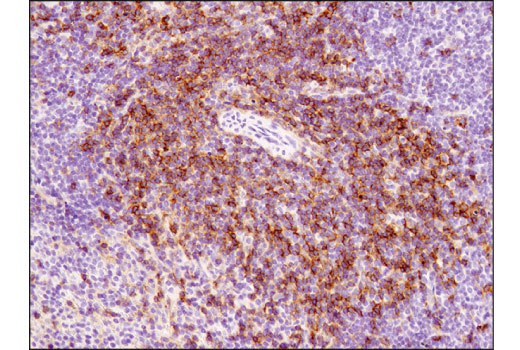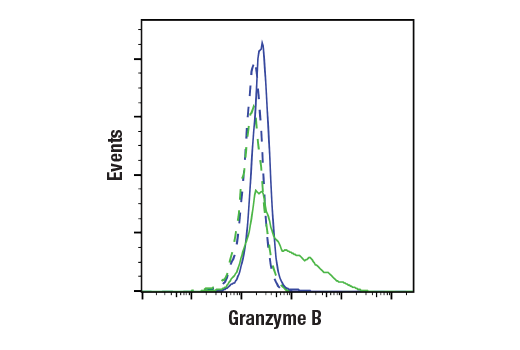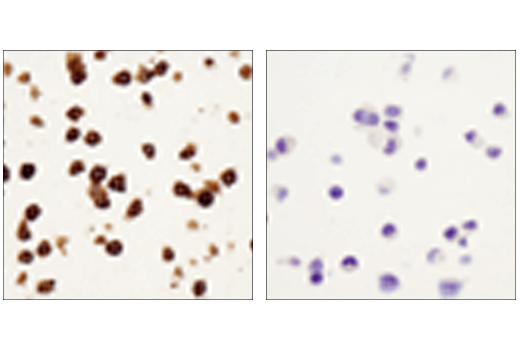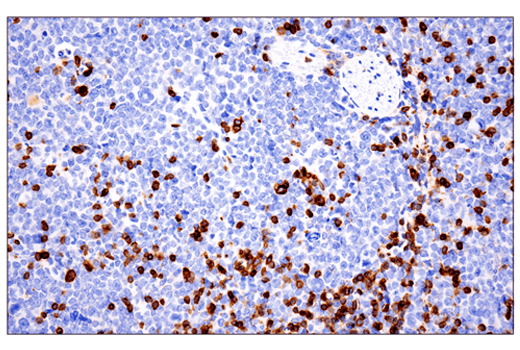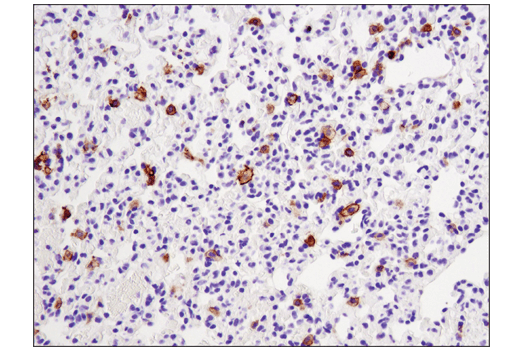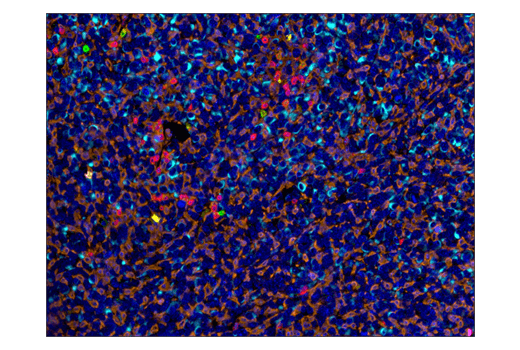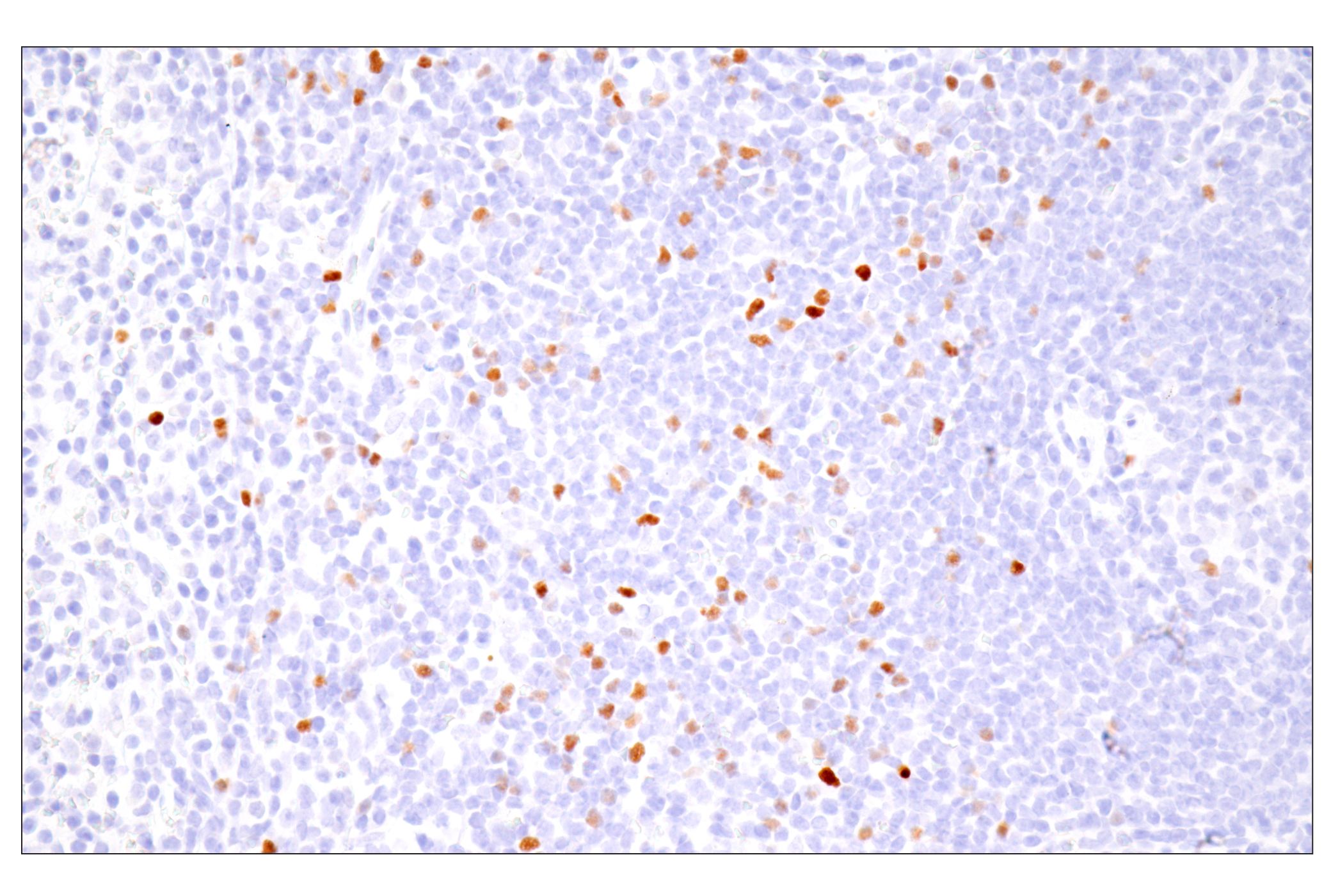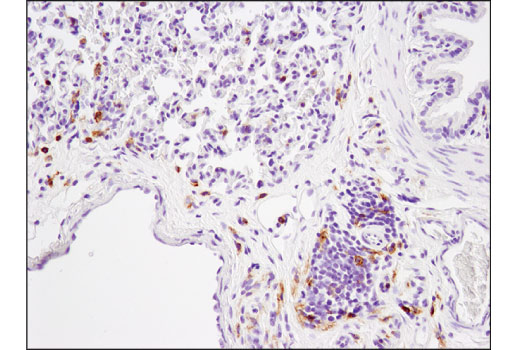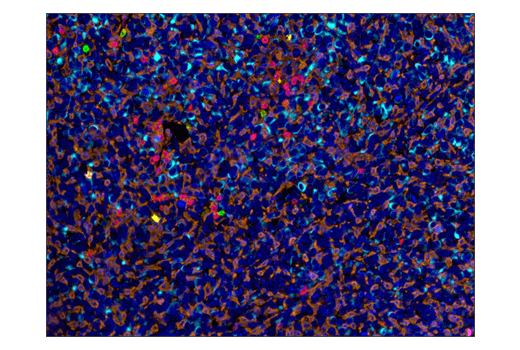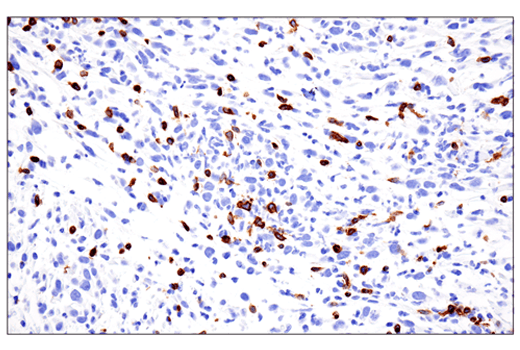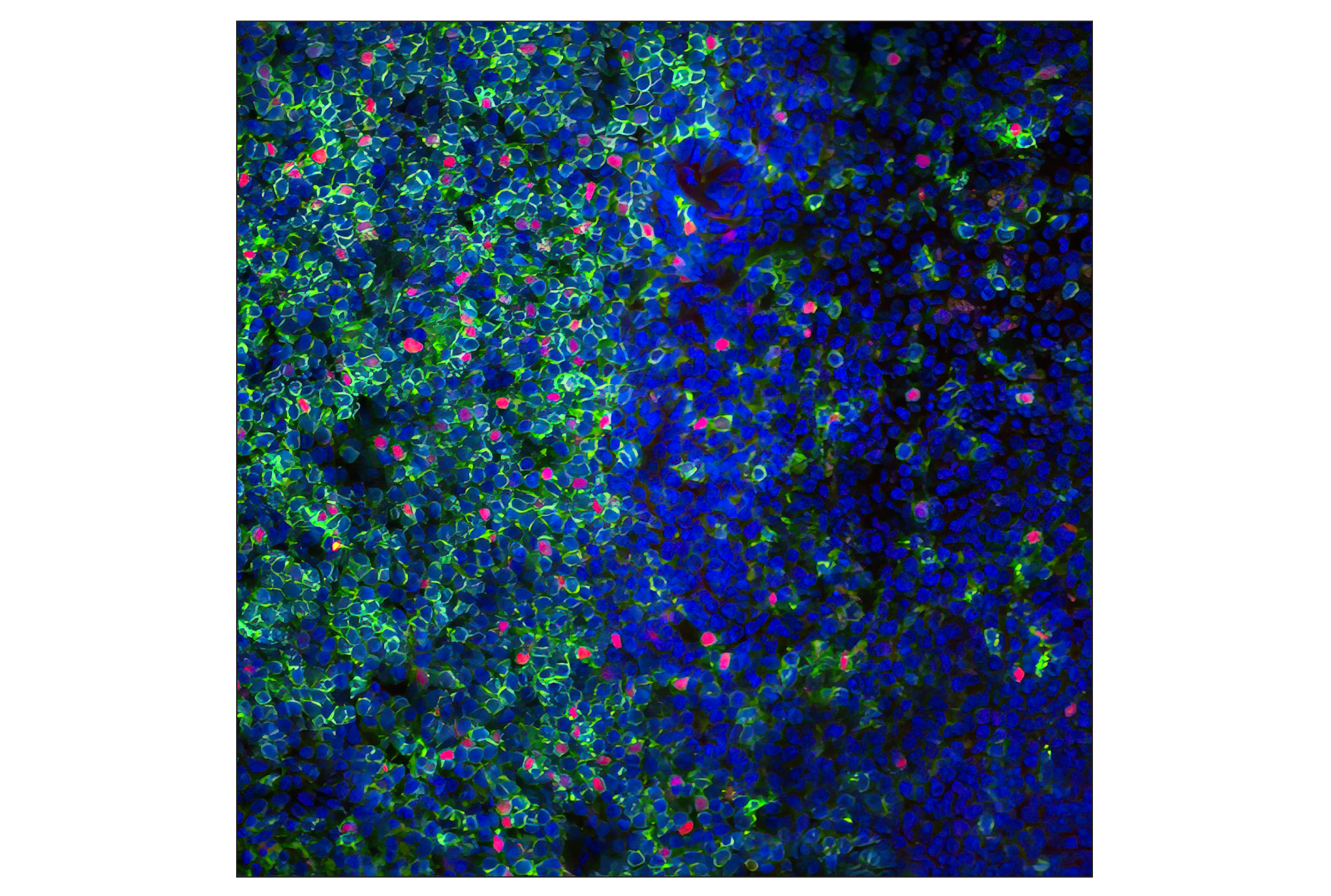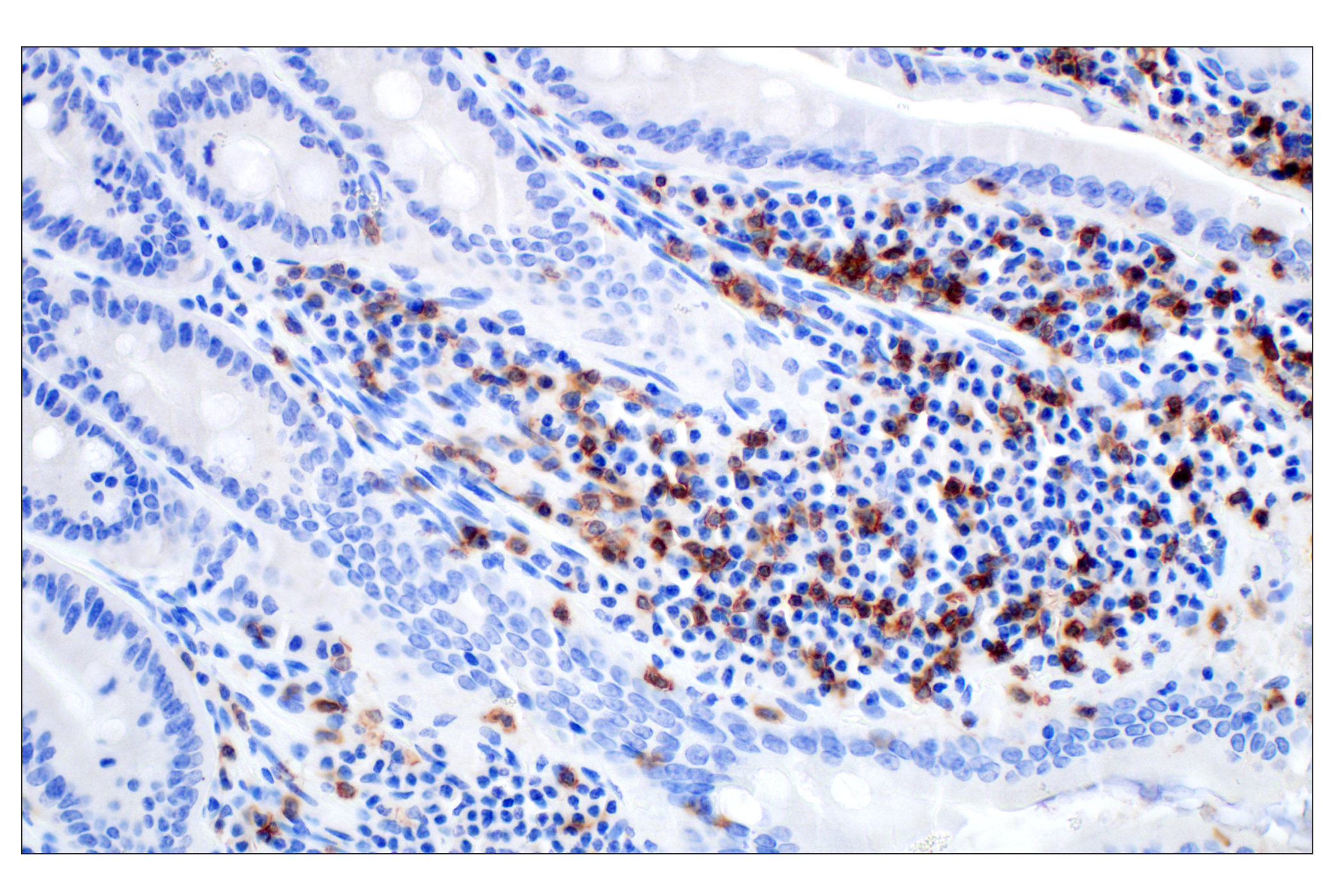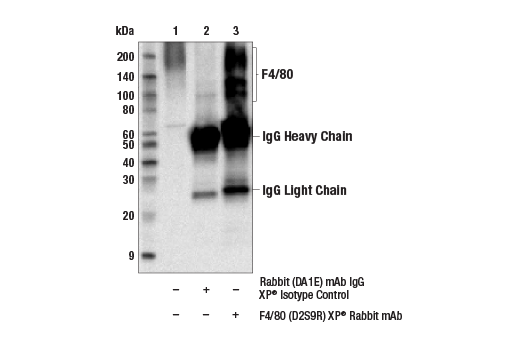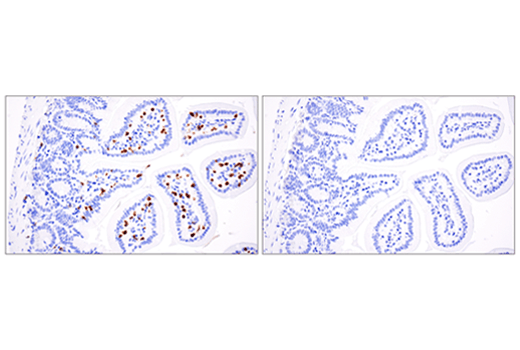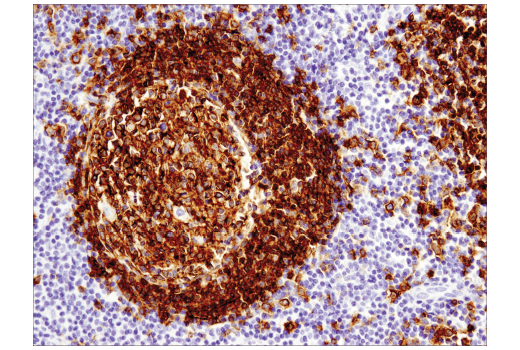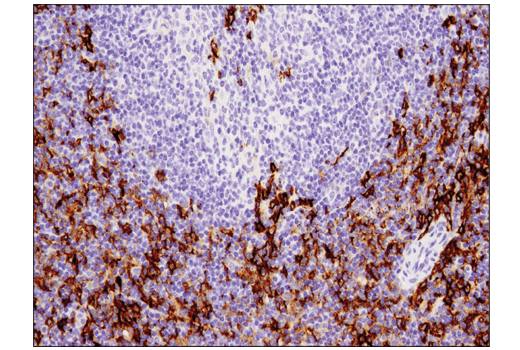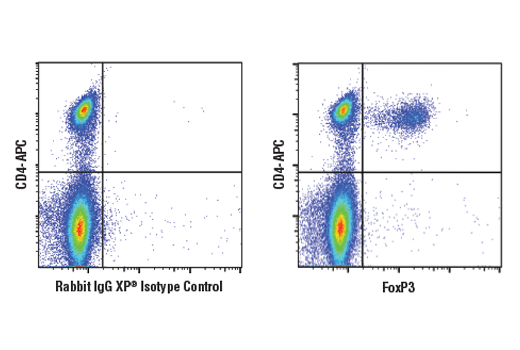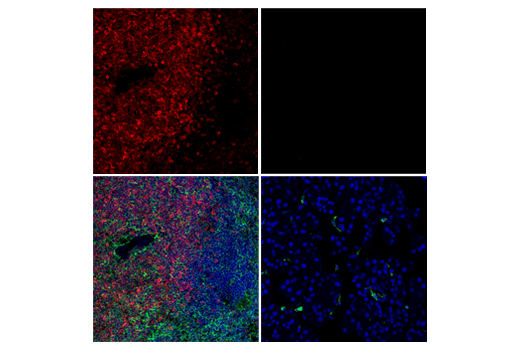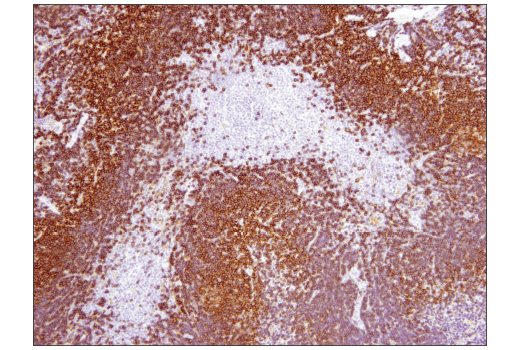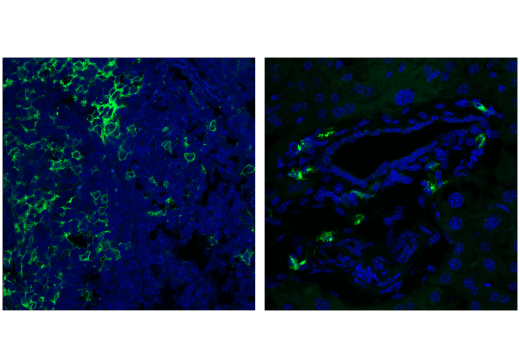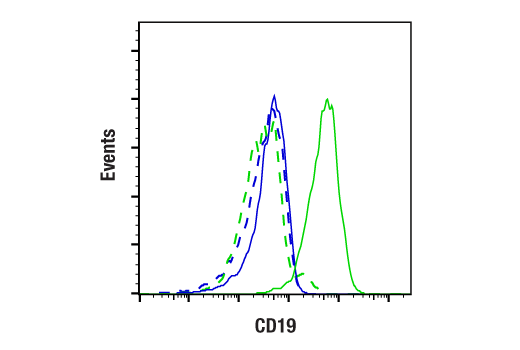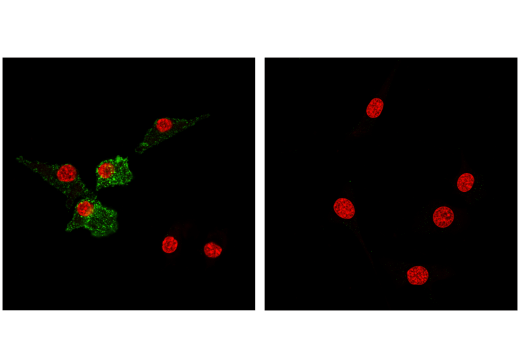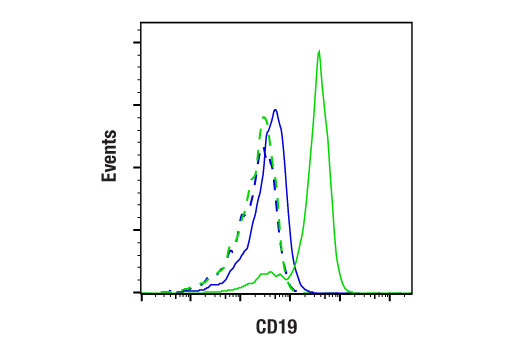| Product Includes | Product # | Quantity | Mol. Wt | Isotype/Source |
|---|---|---|---|---|
| CD4 (D7D2Z) Rabbit mAb | 25229 | 20 µl | 55 kDa | Rabbit IgG |
| CD8α (D4W2Z) XP® Rabbit mAb | 98941 | 20 µl | 35-42 kDa | Rabbit IgG |
| FoxP3 (D6O8R) Rabbit mAb | 12653 | 20 µl | Rabbit IgG | |
| F4/80 (D2S9R) XP® Rabbit mAb | 70076 | 20 µl | 65-250 kDa | Rabbit IgG |
| CD19 (Intracellular Domain) (D4V4B) XP® Rabbit mAb | 90176 | 20 µl | 95 kDa | Rabbit IgG |
| CD11c (D1V9Y) Rabbit mAb | 97585 | 20 µl | 145 kDa | Rabbit IgG |
| Granzyme B (E5V2L) Rabbit mAb | 44153 | 20 µl | 30 kDa | Rabbit IgG |
| CD3ε (E4T1B) XP® Rabbit mAb | 78588 | 20 µl | 23 kDa | Rabbit IgG |
Please visit cellsignal.com for individual component applications, species cross-reactivity, dilutions, protocols, and additional product information.
Description
The Mouse Immune Cell Phenotyping IHC Antibody Sampler Kit provides an economical means of detecting the accumulation of immune cell types in formalin-fixed, paraffin-embedded tissue samples.
Storage
Background
Cluster of Differentiation 3 (CD3) is a multiunit protein complex expressed on the surface of T-cells that directly associates with the T-cell receptor (TCR). CD3 is composed of four polypeptides: ζ, γ, ε and δ. Engagement of TCR complex with antigens presented in Major Histocompatibility Complexes (MHC) induces tyrosine phosphorylation in the immunoreceptor tyrosine-based activation motif (ITAM) of CD3 proteins. CD3 phosphorylation is required for downstream signaling through ZAP-70 and p85 subunit of PI-3 kinase, leading to T cell activation, proliferation, and effector functions (1). Cluster of Differentiation 8 (CD8) is a transmembrane glycoprotein expressed primarily on cytotoxic T cells, but has also been described on a subset of dendritic cells in mice (2,3). On T cells, CD8 is a co-receptor for the TCR, and these two distinct structures are required to recognize antigen bound to MHC Class I (2). Cluster of Differentiation 4 (CD4) is expressed on the surface of T helper cells, regulatory T cells, monocytes, macrophages, and dendritic cells, and plays an important role in the development and activation of T cells. On T cells, CD4 is the co-receptor for the TCR, and these two distinct structures recognize antigen bound to MHC Class II. CD8 and CD4 co-receptors ensure specificity of the TCR–antigen interaction, prolong the contact between the T cell and the antigen presenting cell, and recruit the tyrosine kinase Lck, which is essential for T cell activation (2). Granzyme B is a serine protease expressed by CD8+ cytotoxic T lymphocytes and natural killer (NK) cells and is a key component of the immune response to pathogens and transformed cancer cells (4). Forkhead box P3 (FoxP3) is crucial for the development of T cells with immunosuppressive regulatory properties and is a well-established marker for T regulatory cells (Tregs) (5). CD19 is a co-receptor expressed on B cells that amplifies the signaling cascade initiated by the B cell receptor (BCR) to induce activation. It is a biomarker of B lymphocyte development, lymphoma diagnosis, and can be utilized as a target for leukemia immunotherapies (6,7). F4/80 (EMR1) is a heavily glycosylated G-protein-coupled receptor and is a well-established marker for mouse macrophages (8). CD11c (integrin αX, ITGAX) is a transmembrane glycoprotein highly expressed by dendritic cells, and has also been observed on activated NK cells, subsets of B and T cells, monocytes, granulocytes, and some B cell malignancies including hairy cell leukemia (9,10).
- Kuhns, M.S. et al. (2006) Immunity 24, 133-9.
- Zamoyska, R. (1994) Immunity 1, 243-6.
- Shortman, K. and Heath, W.R. (2010) Immunol Rev 234, 18-31.
- Trapani, J.A. (2001) Genome Biol 2, REVIEWS3014.
- Ochs, H.D. et al. (2007) Immunol Res 38, 112-21.
- Tedder, T.F. et al. (1997) Immunity 6, 107-18.
- Scheuermann, R.H. and Racila, E. (1995) Leuk Lymphoma 18, 385-97.
- McKnight, A.J. et al. (1996) J Biol Chem 271, 486-9.
- Kohrgruber, N. et al. (1999) J Immunol 163, 3250-9.
- Qualai, J. et al. (2016) PLoS One 11, e0154253.
Background References
Trademarks and Patents
Limited Uses
Except as otherwise expressly agreed in a writing signed by a legally authorized representative of CST, the following terms apply to Products provided by CST, its affiliates or its distributors. Any Customer's terms and conditions that are in addition to, or different from, those contained herein, unless separately accepted in writing by a legally authorized representative of CST, are rejected and are of no force or effect.
Products are labeled with For Research Use Only or a similar labeling statement and have not been approved, cleared, or licensed by the FDA or other regulatory foreign or domestic entity, for any purpose. Customer shall not use any Product for any diagnostic or therapeutic purpose, or otherwise in any manner that conflicts with its labeling statement. Products sold or licensed by CST are provided for Customer as the end-user and solely for research and development uses. Any use of Product for diagnostic, prophylactic or therapeutic purposes, or any purchase of Product for resale (alone or as a component) or other commercial purpose, requires a separate license from CST. Customer shall (a) not sell, license, loan, donate or otherwise transfer or make available any Product to any third party, whether alone or in combination with other materials, or use the Products to manufacture any commercial products, (b) not copy, modify, reverse engineer, decompile, disassemble or otherwise attempt to discover the underlying structure or technology of the Products, or use the Products for the purpose of developing any products or services that would compete with CST products or services, (c) not alter or remove from the Products any trademarks, trade names, logos, patent or copyright notices or markings, (d) use the Products solely in accordance with CST Product Terms of Sale and any applicable documentation, and (e) comply with any license, terms of service or similar agreement with respect to any third party products or services used by Customer in connection with the Products.
